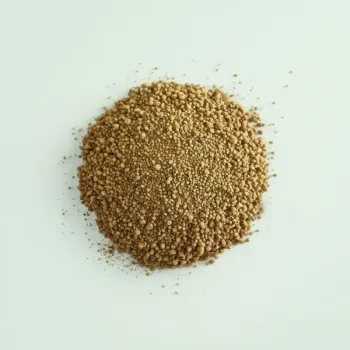Cumin and ground coriander are aromatic spices with distinct flavors; cumin is warm and earthy, while coriander is sweet with a citrusy touch. They enhance various dishes from meat to grains, with different health benefits, and are staples in cuisines ranging from Mexican to South Asian.

Cumin is a warm, earthy spice that's essential in many dishes. It comes from the dried, ground seeds of the Cuminum cyminum plant and is a staple in cuisines such as Mexican, Indian, and Middle Eastern.

Ground Coriander is derived from the seeds of the Coriandrum sativum plant. Slightly sweet and citrusy, it's a fundamental component in spice blends and is widely used in European, Middle Eastern, and South Asian cooking.
Cumin has a robust, earthy flavor with a hint of citrus, while ground coriander offers a mild, sweet taste with a lemony touch. The textures are similar, but their flavor profiles and the way they influence a dish are distinct. Cumin is often used in hearty stews and meat dishes, whereas coriander is preferred in lighter fare, such as vegetable dishes and pastries. Cumin seeds originate from the Mediterranean to South Asia, while coriander seeds are native to regions spanning from Southern Europe to Northern Africa.

Your ultimate Recipe Box, Meal Planner, and Cooking Class all in one
Best used in: Chili, Tacos, Kebabs. Cumin adds depth and warmth to meat dishes. Expect a robust flavor that pairs well with the savoriness of meats. Tip: Toast cumin seeds before grinding to intensify their flavor. Best used in: Sausages, Meat Rubs, Meatballs. Ground coriander offers a subtle, sweet-citrus note that complements meat without overpowering it. Tip: Combine with garlic and citrus zest for a vibrant meat rub.
Best used in: Lentil soups, Vegetable curries, Hummus. Cumin's hearty flavor enhances the earthiness of legumes and vegetables. Tip: Pair with turmeric for a powerful flavor duo in vegetarian dishes. Best used in: Stuffed bell peppers, Carrot soups, Quinoa salads. Ground coriander provides a light, zesty flavor that brightens up vegetarian dishes. Tip: Add towards the end of cooking to retain its delicate flavor.
Best used in: Pilafs, Biryani, Couscous. Cumin contributes to a warm and comforting taste profile, perfect for grain-based dishes. Tip: Use cumin seeds for a burst of flavor in every bite. Best used in: Rice salads, Barley dishes, Tabbouleh. The lemony undertone of ground coriander complements grain dishes without overwhelming them. Tip: Mix with olive oil and lemon juice for a refreshing dressing.
While cumin and ground coriander can be substituted for one another to some extent, they will impart different flavor profiles to the dish. Substituting cumin for coriander will give the dish a more intense, earthy flavor, which may not always be desirable in lighter dishes. On the other hand, using coriander in place of cumin can result in a milder, less pungent taste. It's important to consider the dish's overall flavor balance when making substitutions.
They can be substituted for one another to an extent, but the flavor profiles they bring to a dish are quite different. It's best to use each spice as intended for the recipe. Cumin is often added at the beginning to develop depth of flavor, while ground coriander is sometimes added later to preserve its delicate notes. Cumin is a staple in Mexican, Indian, and Middle Eastern cuisines, while ground coriander is widely used in European, Middle Eastern, and South Asian cooking. Store them in airtight containers in a cool, dark place to preserve their flavor and freshness. Both spices offer health benefits such as aiding digestion, providing essential nutrients, and having anti-inflammatory properties.
Both cumin and ground coriander are low in calories and provide various health benefits including dietary fiber, vitamins, and minerals.
| Nutrient | Cumin ( per Teaspoon ) | Ground Coriander ( per Teaspoon ) |
|---|---|---|
| Fat | 0.47g | 0.31g |
| Fiber | 0.2g | 0.8g |
| Calcium | 20mg | 16mg |
| Protein | 0.37g | 0.11g |
| Calories | 8 | 5 |
| Carbohydrates | 0.93g | 0.92g |